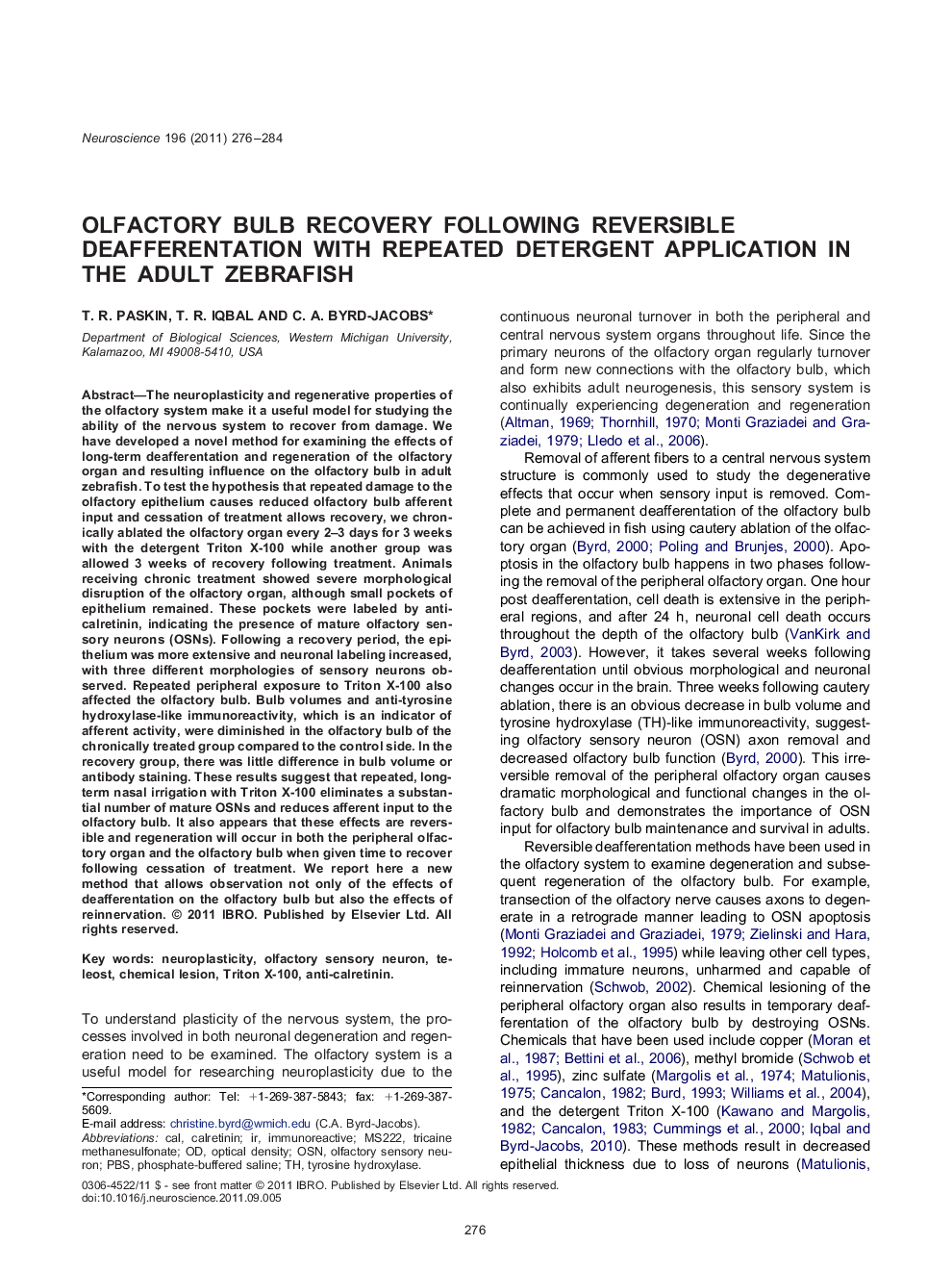| Article ID | Journal | Published Year | Pages | File Type |
|---|---|---|---|---|
| 6276248 | Neuroscience | 2011 | 9 Pages |
The neuroplasticity and regenerative properties of the olfactory system make it a useful model for studying the ability of the nervous system to recover from damage. We have developed a novel method for examining the effects of long-term deafferentation and regeneration of the olfactory organ and resulting influence on the olfactory bulb in adult zebrafish. To test the hypothesis that repeated damage to the olfactory epithelium causes reduced olfactory bulb afferent input and cessation of treatment allows recovery, we chronically ablated the olfactory organ every 2–3 days for 3 weeks with the detergent Triton X-100 while another group was allowed 3 weeks of recovery following treatment. Animals receiving chronic treatment showed severe morphological disruption of the olfactory organ, although small pockets of epithelium remained. These pockets were labeled by anti-calretinin, indicating the presence of mature olfactory sensory neurons (OSNs). Following a recovery period, the epithelium was more extensive and neuronal labeling increased, with three different morphologies of sensory neurons observed. Repeated peripheral exposure to Triton X-100 also affected the olfactory bulb. Bulb volumes and anti-tyrosine hydroxylase-like immunoreactivity, which is an indicator of afferent activity, were diminished in the olfactory bulb of the chronically treated group compared to the control side. In the recovery group, there was little difference in bulb volume or antibody staining. These results suggest that repeated, long-term nasal irrigation with Triton X-100 eliminates a substantial number of mature OSNs and reduces afferent input to the olfactory bulb. It also appears that these effects are reversible and regeneration will occur in both the peripheral olfactory organ and the olfactory bulb when given time to recover following cessation of treatment. We report here a new method that allows observation not only of the effects of deafferentation on the olfactory bulb but also the effects of reinnervation.
▶Repeated nasal irrigation with Triton X-100 causes severe morphological disruption and reduces sensory neuron population in the olfactory organ. ▶Reduced afferent input to the olfactory bulb leads to a reduction in olfactory bulb volume and tyrosine hydroxylase expression. ▶Cessation of Triton X-100 application allows neuronal regeneration and recovery of the olfactory epithelium and lamellar structure. ▶Three weeks following termination of detergent treatment, olfactory bulb volume and tyrosine hydroxylase-like immunoreactivity return to near control levels.
